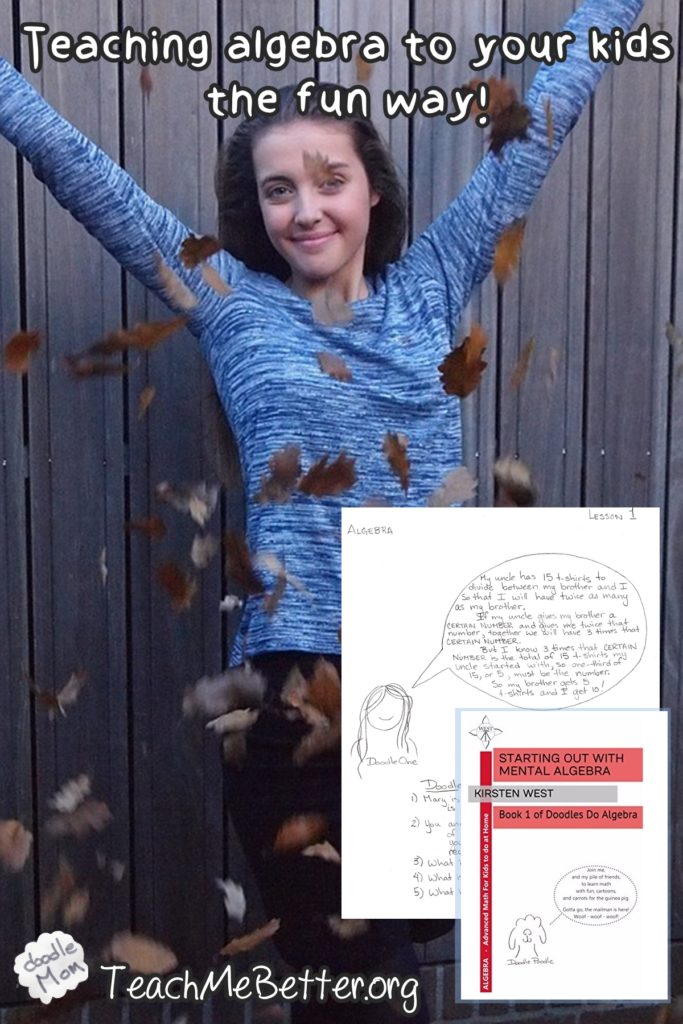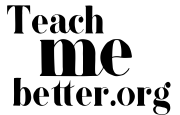
Hi! I bet you are wondering what Doodles Do Algebra is all about and how it can help your child learn math. Well, I will set about to answer that question in a series of posts and share some ideas and excerpts from my book series as a way to answer your questions.
If you ever have a specific question, though, please reach out to me directly. I am happy to provide advice. I know how hard it can be to explain math to your kids, and I want to help you out.
The first workbook in the Doodles Do Algebra curriculum starts your child out with a series of mental math exercises. Before your kids learns about unknowns and how to simplify polynomials, it is really helpful to give your kids familiarity and confidence “mentally” solving problems that usually are taught as algebra problems with written steps.
I discovered, after fielding years and years of repeated forms of the “why do I have to know how to do this?” questions, that my kids just took to algebra straight away when I took them through a number of mental math problems first.
I know what you are thinking. Doing algebra in your head. No pen or paper. Aaakkk!
But don’t worry. I know you can do it. Just don’t let your fear get in the way. It will surprise you how easy it is to do the problems without pencil and paper.
General Philosophy Behind Teaching Mental Math and How to Do It:
A good part of algebra requires thinking through problems in your head. This type of mental work is not taught anymore in school (not even in the dark ages of the 1970’s when I was in middle school). So learning to teach it to your own children first requires that you understand how it works.
Let’s start at the beginning.
One important type of mental “algebra” problem is focused on solving the typical type of “so-and-so has twice as many apples as his friend, if together they have such-many apples, how many does each person have?” problems.
The key here is to mentally count up how many “units” there are in total.
Here is an example:
My sister and I have 18 cents, and I have twice as many as my sister; how many cents do each of us have?
So you need to help your kid think about it like this:
There are 18 cents total
You are dividing that 18 cents a total of 3 ways. DoodleTwo (my boy) gets 2 of those parts (or ways) and DoodleOne (his sister) gets the last 1 part.
So if you are dividing 18 into 3 equal parts, then each part is 6 cents because 18/6 is 3.
That means that DoodleOne (sister) gets one part, or 3 cents.
And DoodleTwo gets two parts, or 2×3 cents, or 6 cents.
Now if you think of dividing the 18 cents “x” ways instead of using the word “parts”, you are now doing mental algebra!
It is really easy unless you had a traumatic middle school algebra experience and then fear, uncertainty, and doubt creep in at odd moments.
Don’t worry, your kids will have a much easier time with this than you think.
For more advice and creative and fun worksheet-based doodling algebra lessons for your kids, see the Doodles Do Algebra series of books!
